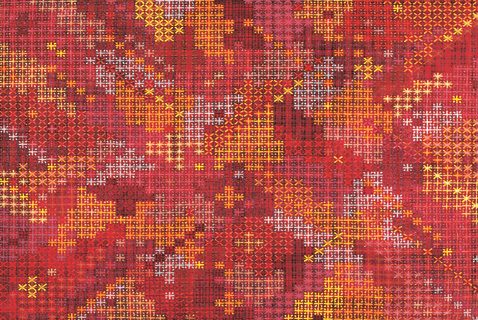Ding Yi is a Chinese artist in his mid-forties who lives and works in Shanghai. Last week the first exhibition of his work in this country opened at the Ikon Gallery in Birmingham. A small-scale retrospective, spanning the seventeen years of his career so far, it reveals him as a highly gifted and intriguingly unpredictable painter. His work is resolutely non-figurative. It is formed from a vocabulary of simple forms and gestures – principally two shapes, one resembling the mathematical plus sign, the other the cross in a game of noughts and crosses – which are densely multiplied across the surface of the canvas so that, at first glance, it seems to resemble a swatch of patterned textile.
But the artist finds all kinds of possibilities, different moods and atmospheres, within the limitations of this pictorial language. Many of his earlier works are sober, low-toned paintings that verge on monk-like asceticism. By contrast, his most recent pictures are large and self-consciously garish creations. Asymmetrical polyptychs painted in flickering reds and oranges, vibrant greens and yellows, they bring to mind the neon dazzle and shape-shifting structures of a modern metropolis.
Ding Yi was born in 1962 and educated first at the Shanghai Arts and Crafts Institute, then at Shanghai University’s Fine Arts Department. His teachers encouraged him to pursue a career in Chinese traditional painting, but he decided otherwise. By 1988 he had created the first of his so-called “cross paintings”, all of which are simply entitled Appearance of Crosses (they are distinguished individually by date and serial number). He was inspired by the example a Chinese artist called Zhao Wuji, who travelled to Paris in the 1940s and developed a style shaped, in equal measure, by European painterly abstraction and the traditions of Sung Dynasty ink-and-brush landscape painting. Ding Yi’s...

Ding Yi and Mike Marshall at The Ikon Gallery 2005
04-12-2005

